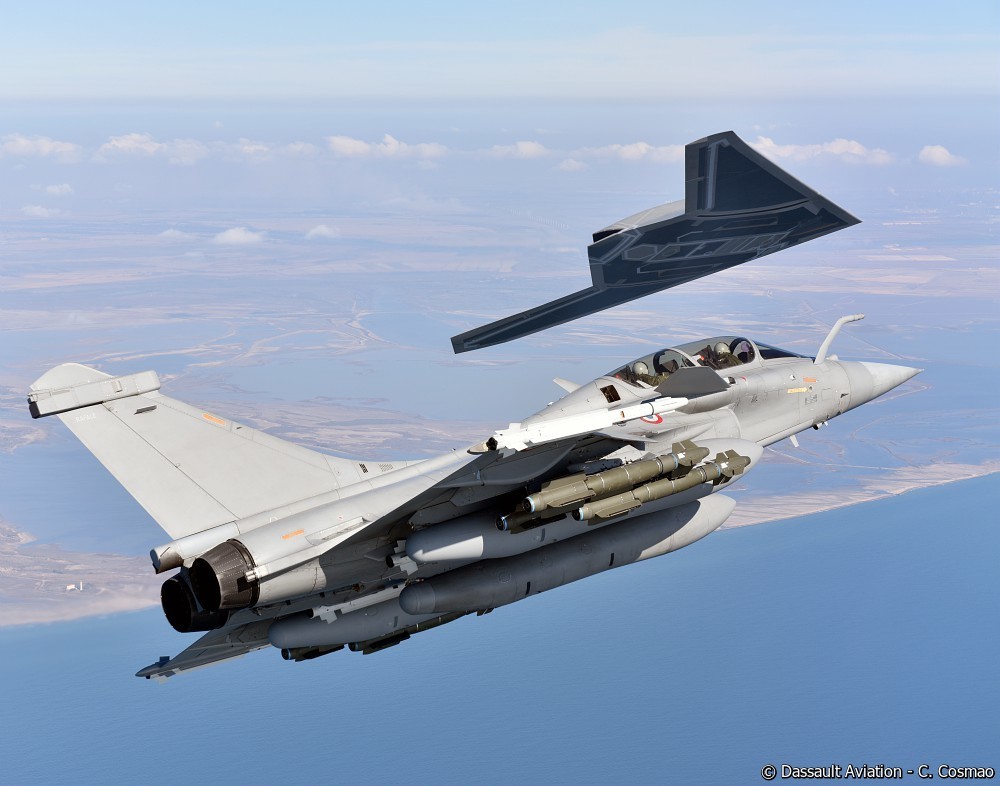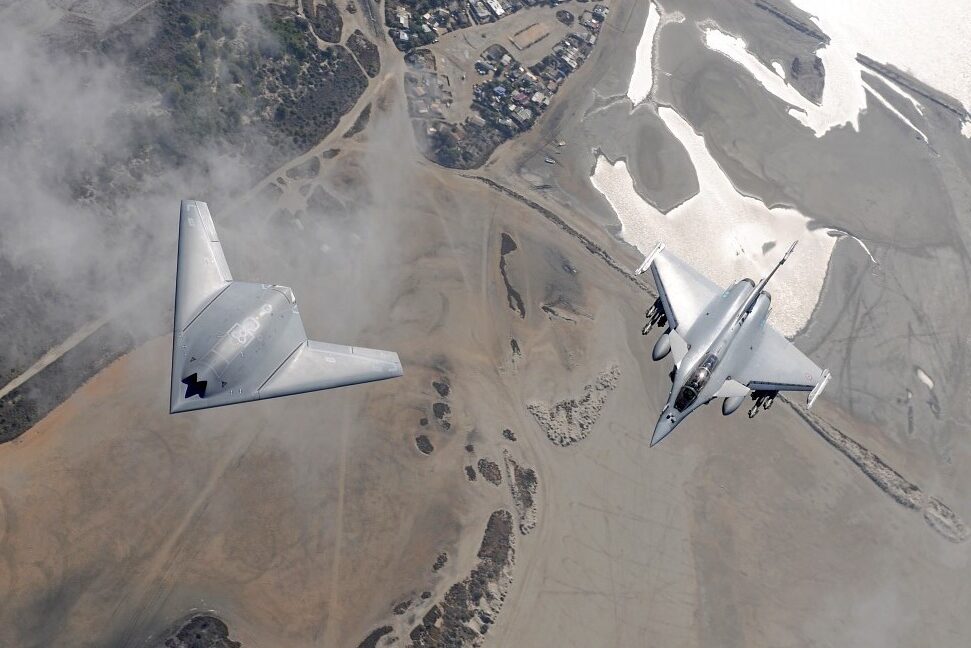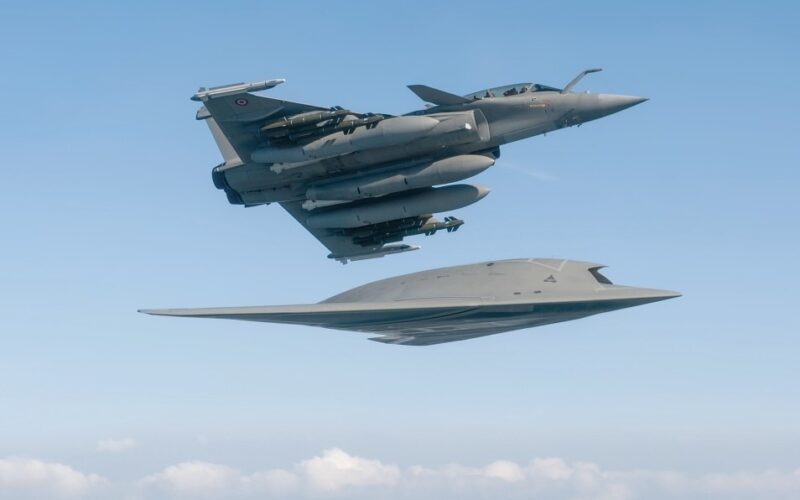Sébastien Lecornu, French Minister of the Armed Forces, has confirmed the development of a new combat drone to complement the upcoming Rafale F5 standard, set for deployment post-2030.
The announcement was made on October 8, 2024, during a ceremony marking the 60th anniversary of the French Strategic Air Forces (FAS) at the Saint-Dizier Air Base in eastern France.
“The first orders were notified to manufacturers a few weeks ago,” Lecornu said.
Dassault Aviation, which communicated after the Ministry’s announcement, is expected to play a significant role in the project. The new stealth combat drone, set to be operational by 2033, is designed to work alongside the Dassault Rafale F5.
According to the manufacturer, it will include stealth technology and autonomous control systems, and will also have an internal weapons bay. By acting as a forward reconnaissance unit, the drone will be used to breach enemy defenses and gather intelligence before the Rafale engages in combat.
Leveraging the achievements of the nEUROn program

Such characteristics resemble those of the nEUROn technology demonstrator, a collaborative effort led by Dassault Aviation and involving multiple European contractors. The program began in 2003, with the nEUROn completing its first flight in December 2012.
“This stealth combat drone, alongside the Rafale F5, will contribute to the technological and operational superiority of the French wings from 2033,” commented Éric Trappier, CEO of Dassault Aviation, in a statement. “Dassault Aviation and its partners are proud to serve the Armed Forces and the DGA [French General Directorate of Armaments – ed. note]; their renewed trust honors and obliges us.”
Loyal Wingmen: A stopgap solution before the sixth generation of fighter jets?
The concept, which will predate the Future Combat Air system program developed by France, Germany, and Spain, was first mentioned in the framework of the next French military programming law, for the 2024-2030 period.
“The Rafale F5 standard will be developed during this military programming law,” read an amendment drafted in May 2023. “It includes in particular the development of a drone accompanying the Rafale, resulting from the work of the nEUROn demonstrator.”
The idea of keeping pilots and their expensive machines away from the action by relying on attritable drones with fighter-like capabilities, commonly referred to as ‘loyal wingmen’, is central to the sixth generation of fighter jets being developed.
Such systems, however, could be operational before their piloted counterparts. In June 2024, Airbus presented its Wingman concept at the International Aerospace Exhibition ILA in Berlin, with which it expects to collaborate and support the Eurofighter Typhoon.
What is the Rafale F5 standard?

The upcoming Rafale F5, expected to enter service by 2030, is designed to enhance the operational effectiveness of the French Air and Space Force, particularly for conventional missions and nuclear deterrence roles. It aims to address evolving global threats and will succeed the F4 standard, which already introduced significant improvements in connectivity and data processing capabilities.
“When the F5 standard comes out, the plane will be very different,” General Stéphane Mille, then-French Air Force Chief of Staff, said in a parliamentary hearing. “The computing capacities to process hundreds of thousands of pieces of information require wiring that the Rafale as we know it today is not capable of supporting.”
Another notable addition to the arsenal of the Rafale F5 alongside its tandem drone is the ASN4G, a hypersonic nuclear-capable ramjet missile that will become the air-launched component of France’s nuclear deterrent by 2035.
According to Lecornu, the F5 standard will represent a significant technological advancement for the French Air and Space Force, especially the FAS, similar to the transition from the Mirage 2000N to the Rafale in 2018.

